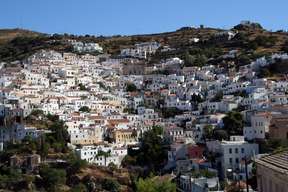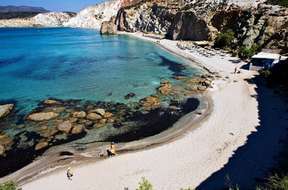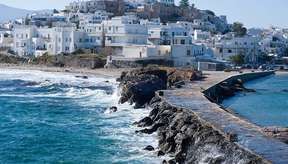Kea is an island in the Aegean Sea belonging to the Cyclades archipelago, to the north, near Attica, 16 nautical miles from Lavrio and 12 miles from Cape Sounion. In ancient times, it was known as Ceos and Zea. Its surface area is 148 km ² and it has about 2400 inhabitants. Less frequented than its neighbors to the Aegean Sea, Kea is ideal for relaxing by the crystal-clear sea.
Kea attracts mostly Athenians or Greeks from wealthy classes. The port of Kea, Korissia, is built on the site of the ancient city of Korissos, one of the four main cities of the island with Ioulida, Karthea and Piesa. It was here, in 1930, that the statue of Kouros, now preserved in the National Archaeological Museum of Athens, was uncovered. Karthea was the most important of the four city-states of Kea in antiquity. It is located on the south-east side of the island, 23 km from Ioulida, just above the bay of Poles. It is quite difficult to access.
In Karthea we find the temple of the sea, one of the most beautiful ancient sites of the island. At 5.5 km from the town, perched on the mountain, is Ioulida, the capital, very well preserved with neoclassical houses and churches with reddish roofs. The frescoes by Alekos Fassianos (a famous Greek painter), the vaulted ceilings of the whitewashed roofs, the windmills and a Venetian castle from the 13th century compose the city landscape. Iulida is, according to some Greeks, one of the most beautiful cities in Greece.
The Archaeological Museum is also worth a visit for its terracotta statuettes, vases and Cycladic idols. The collection of objects from the archaic period is displayed on the first floor. In the second, you can see objects found on the Neolithic site of Agia Kyriaki, near the port. The Monastery of Panagia Kastriani offers small rooms for rent. The monastery dates back to the 18th century.
At the other end of Ioulida, stands the ‘eternal guardian’ of the country, the sculpture of the Lion of Kea or Lionda, which measures 6 meters high and reflects the art of the 11th century BC. According to the legend, Kea was once called ‘the island of water’, Ydroussa.
It is believed that the name is related to the nymphs, who lived here according to Greek mythology. The island was so beautiful that the gods, jealous, sent a lion to ravage the lands and persecute the nymphs. The nymphs fled, and the island dried up. Kea offers many sandy beaches, including Otzias, Koundouros and Korissia. In Koundouros you will find all kinds of water sports.




